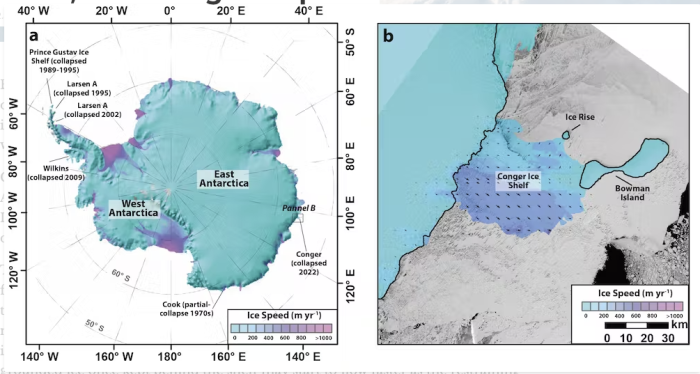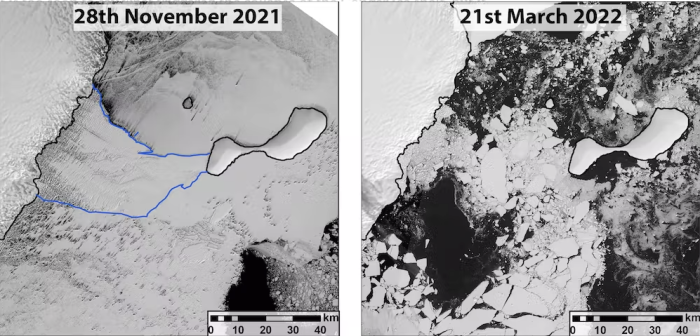- The 1200 square km Conger ice shelf collapsed in March 2022.
- The collapse of an ice shelf is a rare event.

On the 15th of March 2022, the complete collapse of the Conger ice shelf in East Antarctica occurred. The Conger ice shelf was a 1200 square kilometre expanse of land-formed ice, the size of Rome, floating on the ocean but still attached to land-fast ice. Antarctica is divided into east and west antarctica and separated by the Transantarctic Mountain Range. Whilst the west has experienced instability and collapsing ice, with the ice shelves there losing iceberg chunks for decades, the east experiences ice collapse rarely. However, in March 2022, the Eastern Antarctic ice shelf collapsed, breaking off from Antarctica completely.

Ice shelves are already floating in the ocean so this collapse on its own will not add to sea level rise. However, the loss of ice shelves can accelerate the flow of the land-based ice behind them into the ocean. It is not clear yet what led to the collapse of the Conger ice shelf but fortunately it will have only a minor impact on global sea level rise as there is little ice in the valley behind it.

The collapse of ice shelves are rare events. Collapse have historically occurred due to natural processes, however the number of ice shelves that have collapsed in recent decades is concerning. As the climate continues to warm, more and more ice shelf collapses are forecast to occur, potentially leading to an acceleration of sea level rise.
Main research contact: Professor Julie Arblaster julie.arblaster@monash.edu
The State of Weather and Climate Extremes 2022
Weather and climate extremes in Antarctica
Extreme events in 2022
Heatwaves in Western Australia
Extreme rainfall and flooding in Queensland and New South Wales February-March 2022
Record low Antarctic sea ice extent in 2022
Simultaneous Antarctic and Arctic heatwaves
Collapse of East Antarctic Conger ice shelf
Hailstorms in Queensland, Victoria and New South Wales
Damaging wind gusts in South Australia and the Northern Territory
© 2023 ARC Centre of Excellence for Climate Extremes
References and acknowledgements available in the PDF version available here.
Materials used are for educational purposes and either author provided or used under fair dealing provisions.
